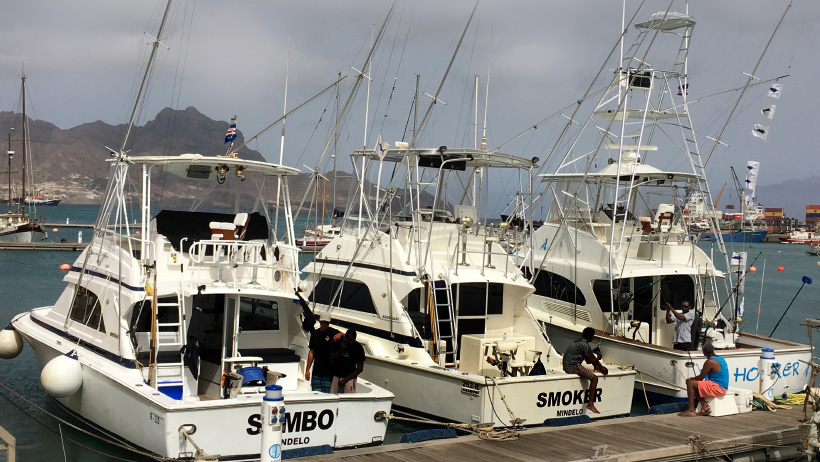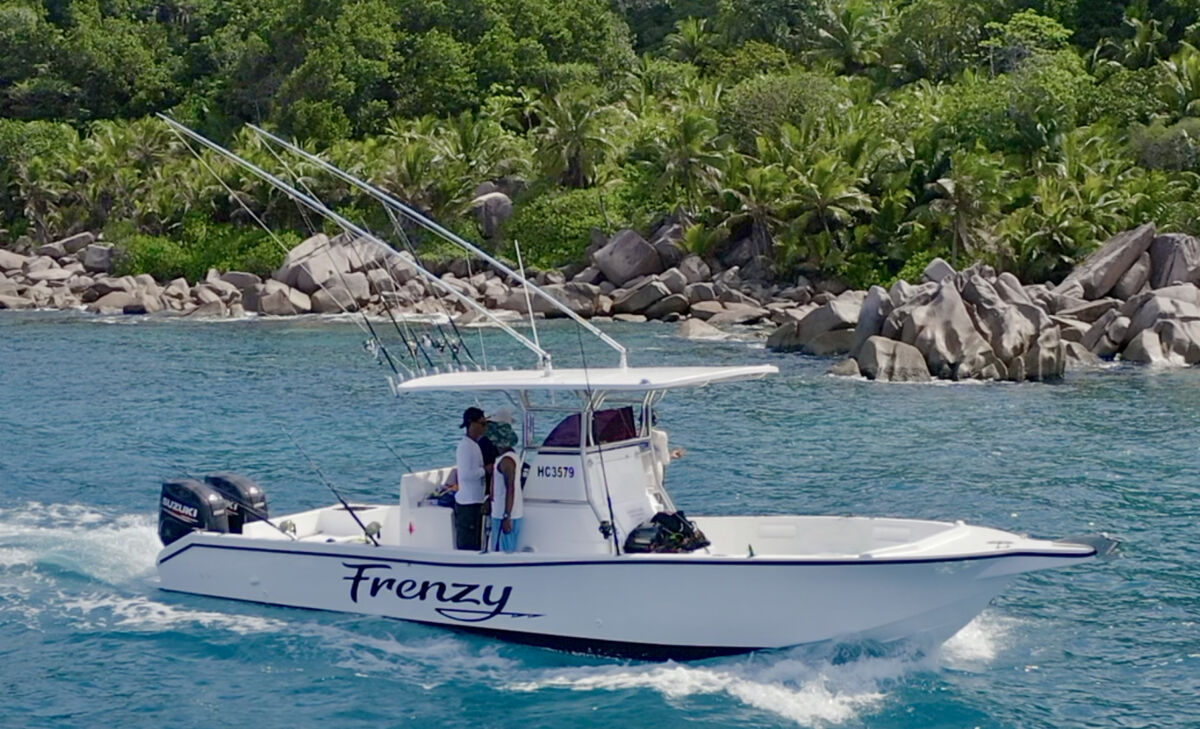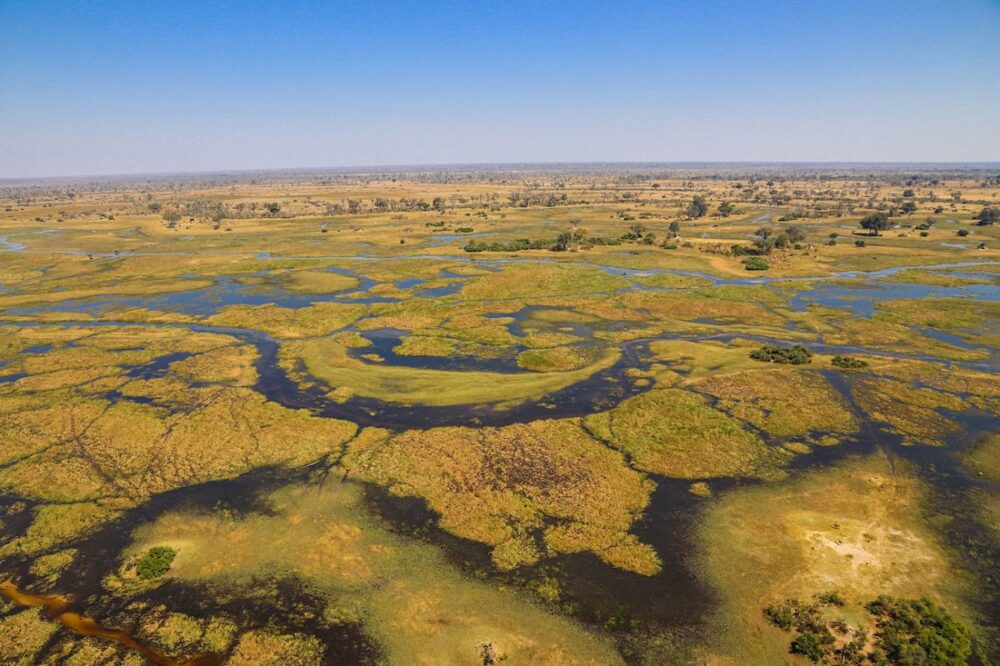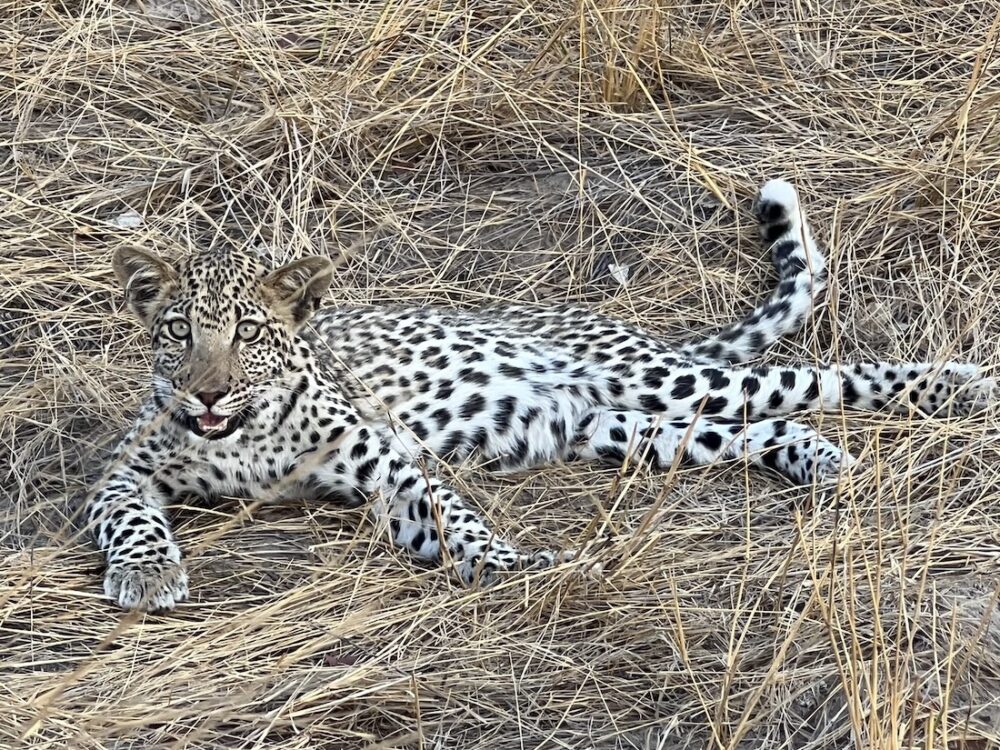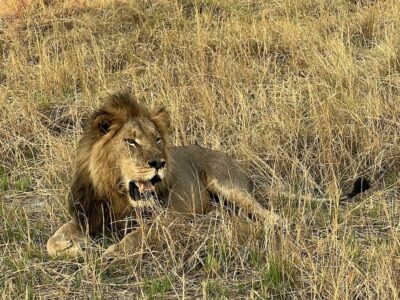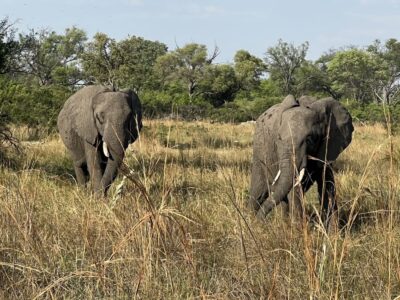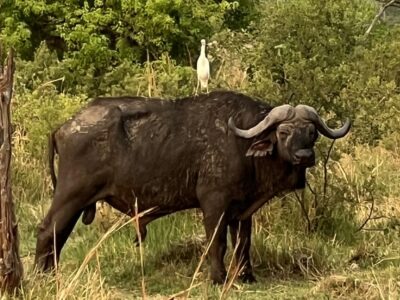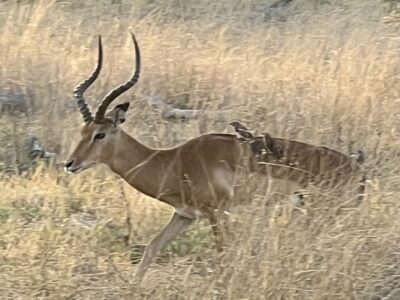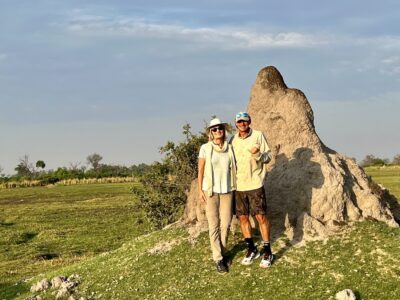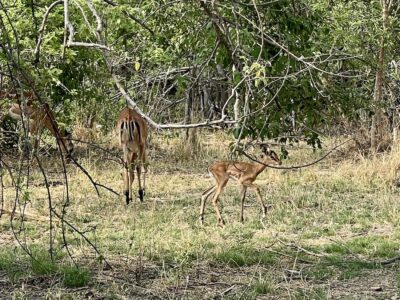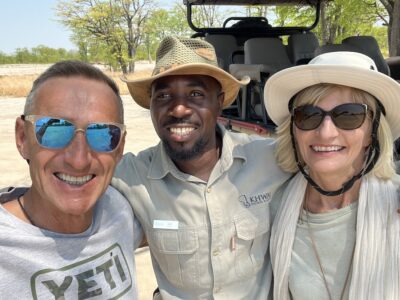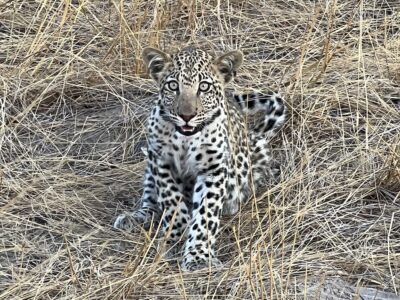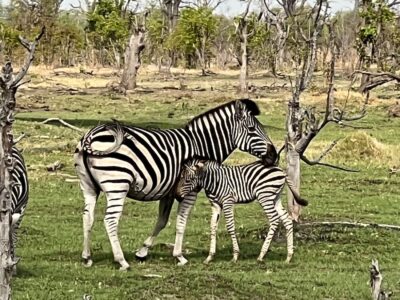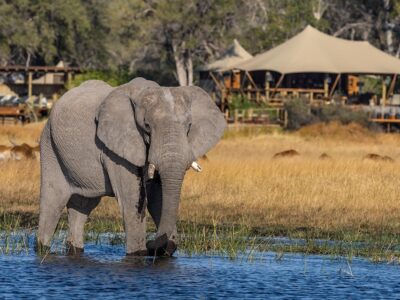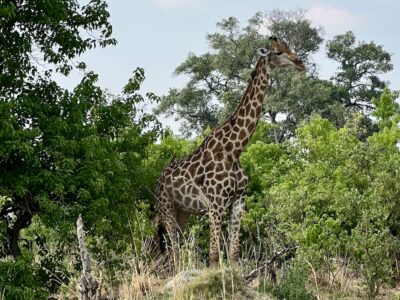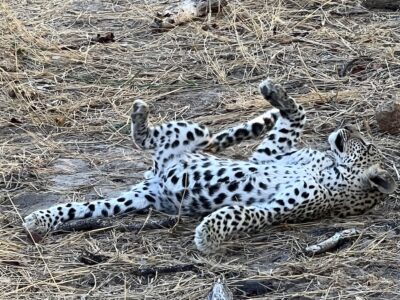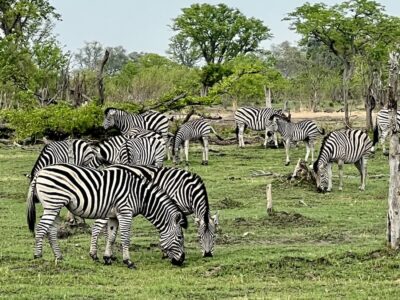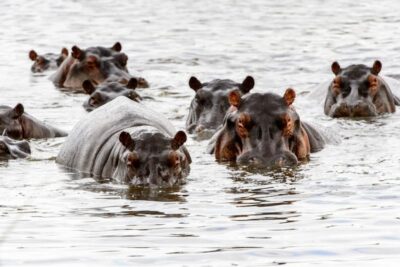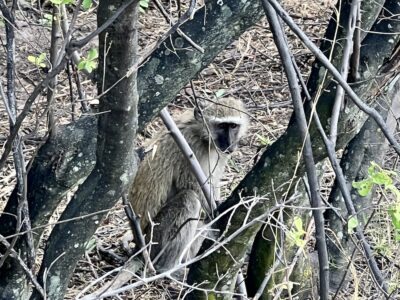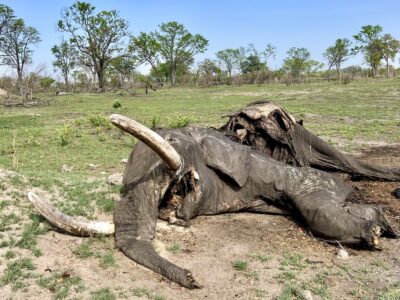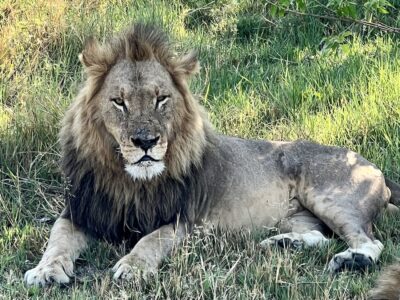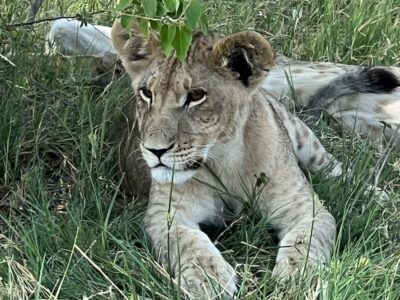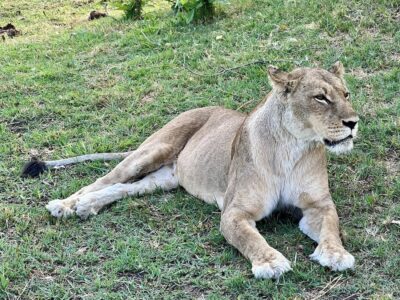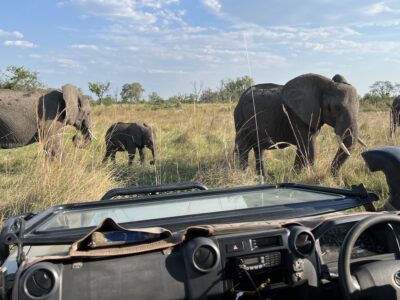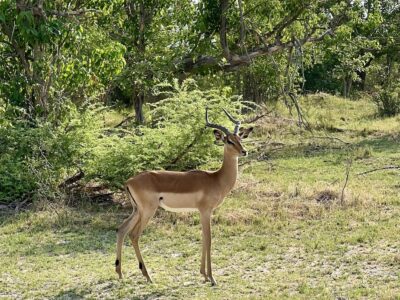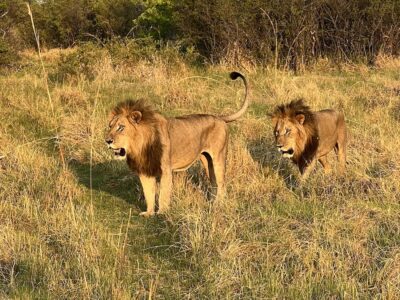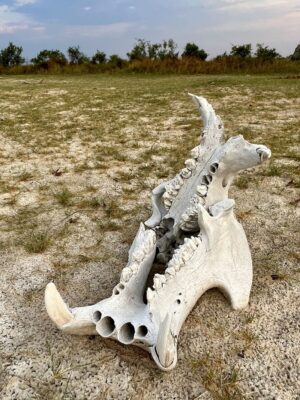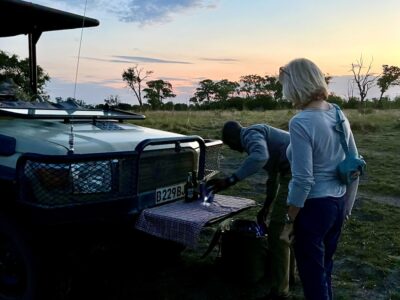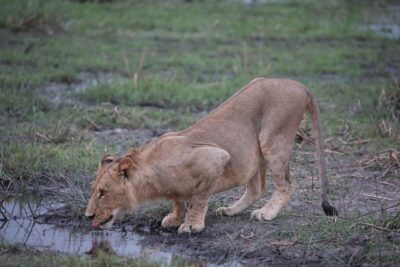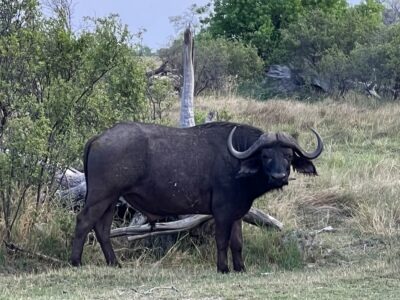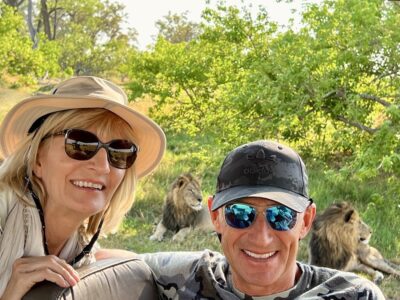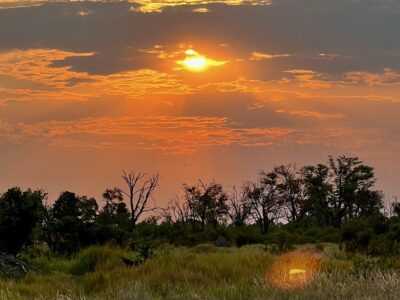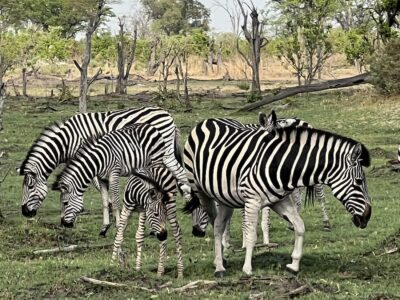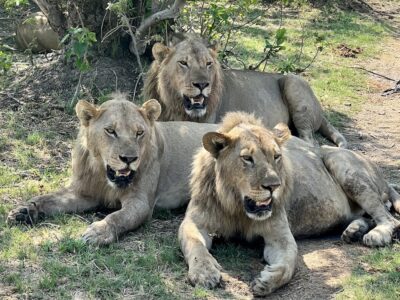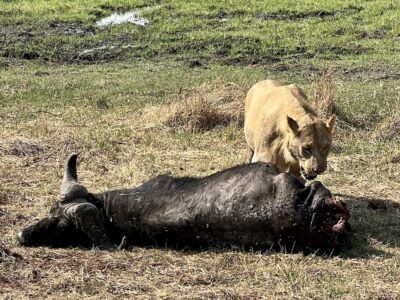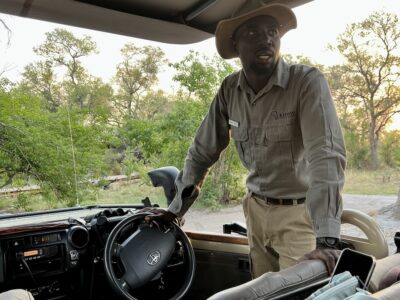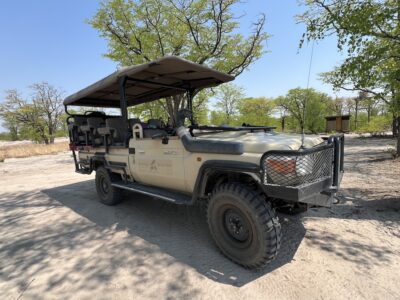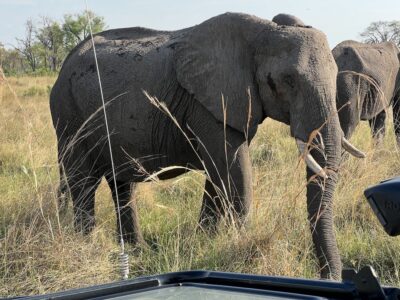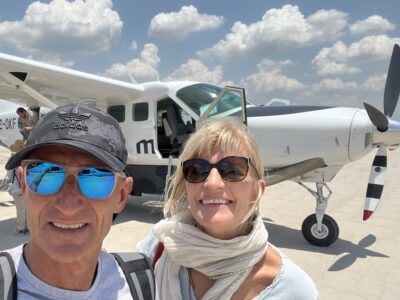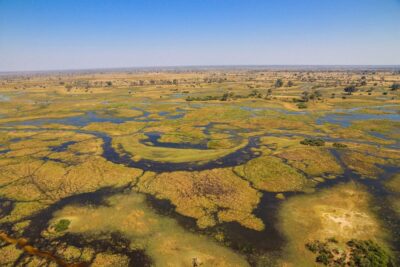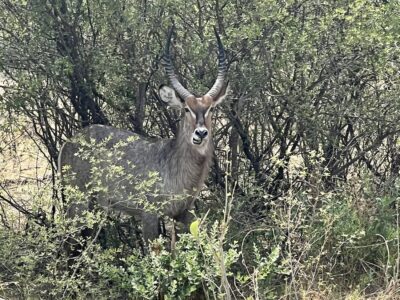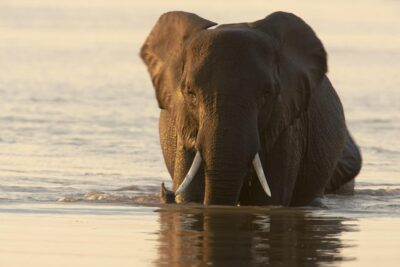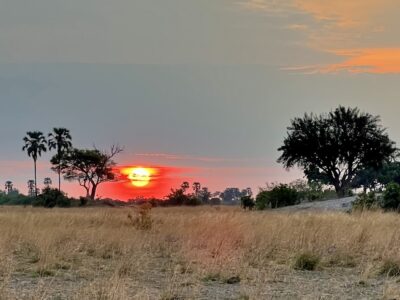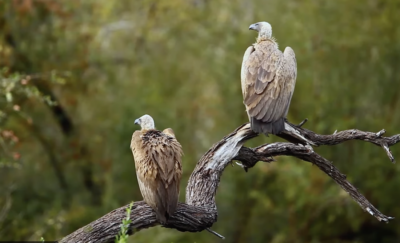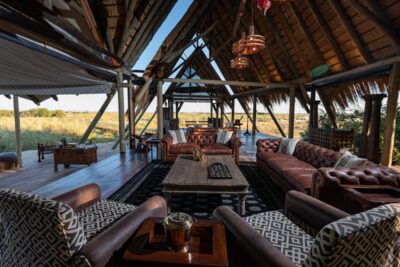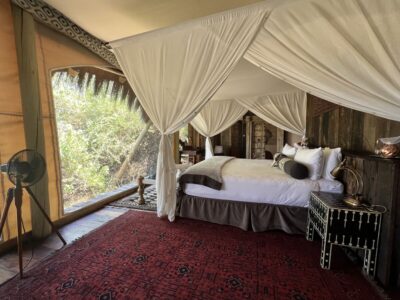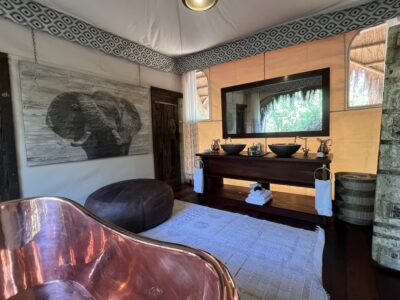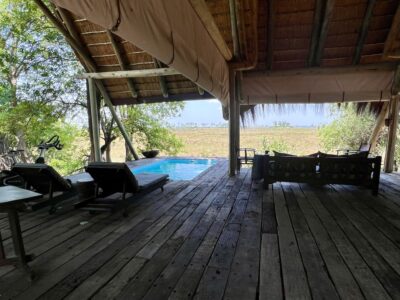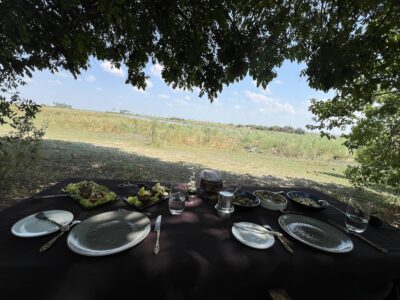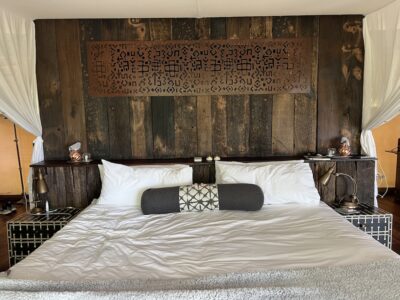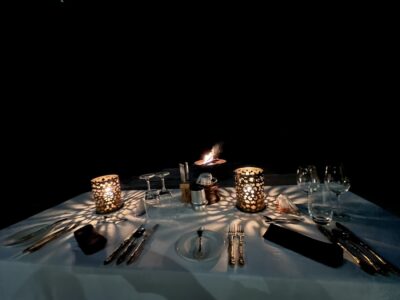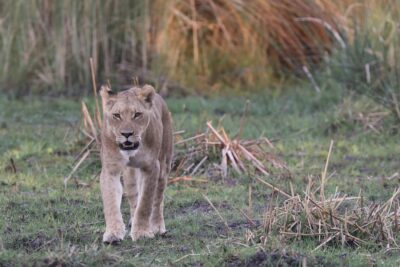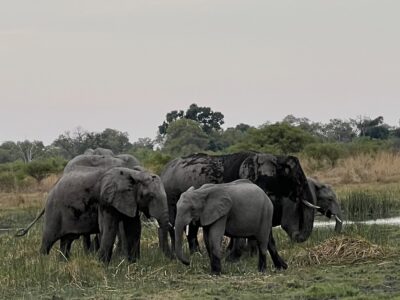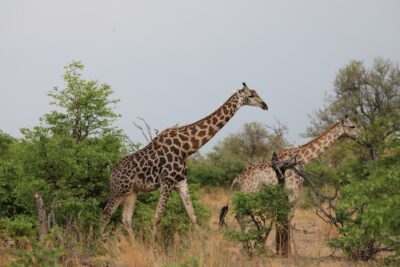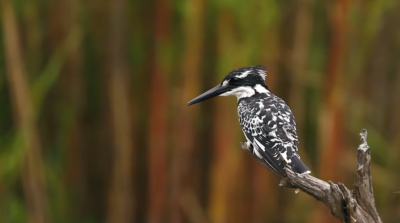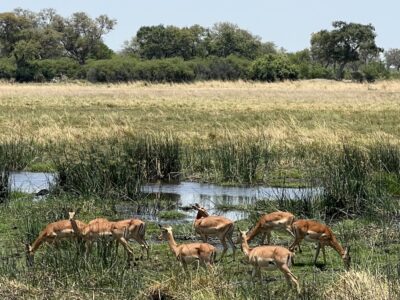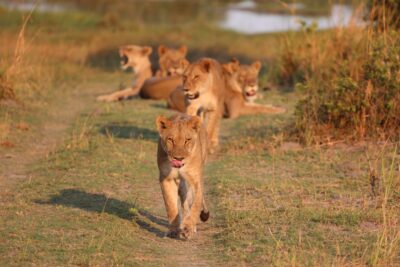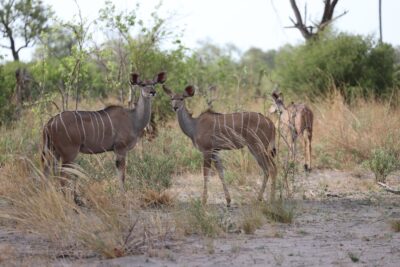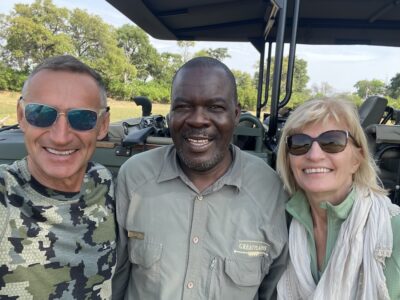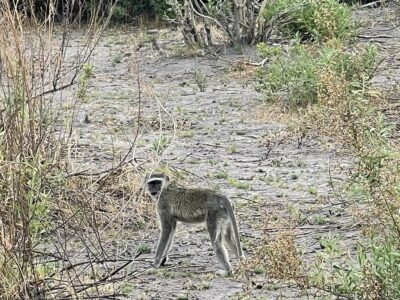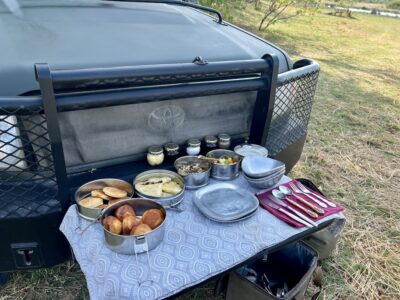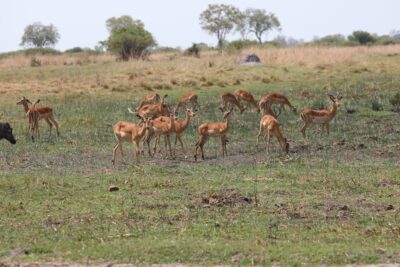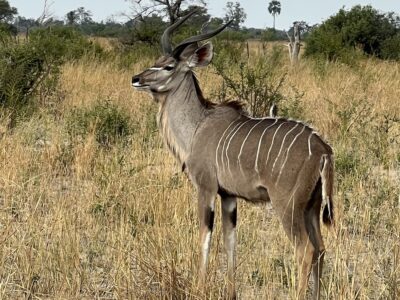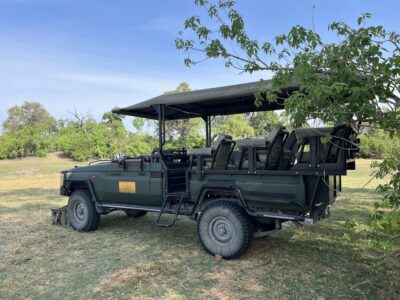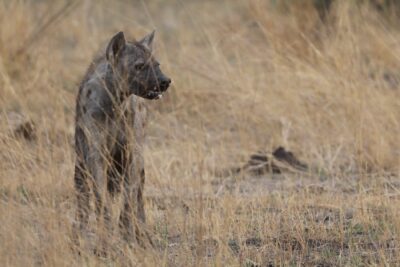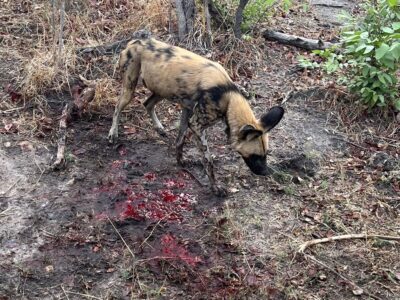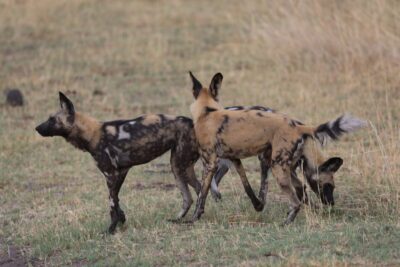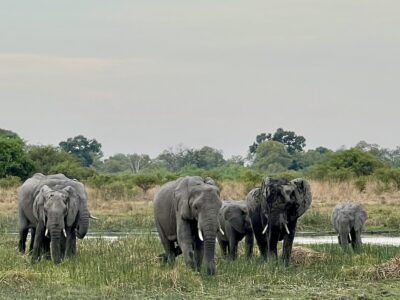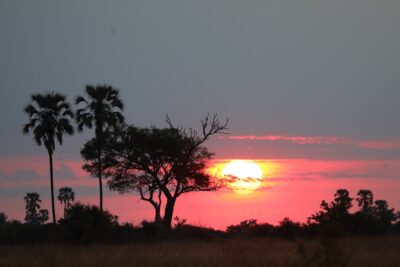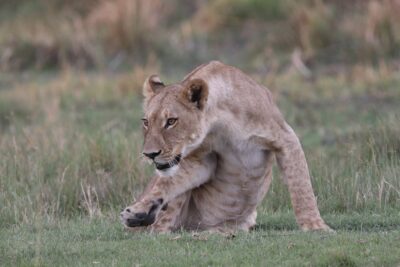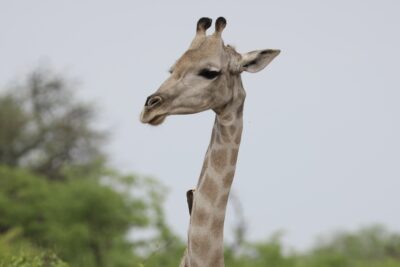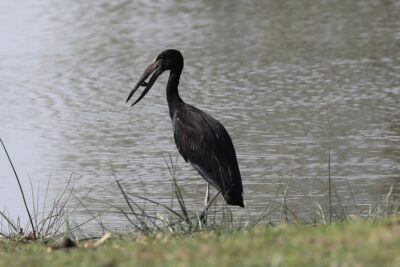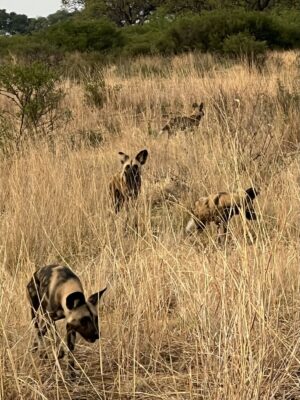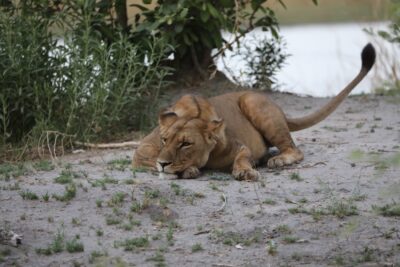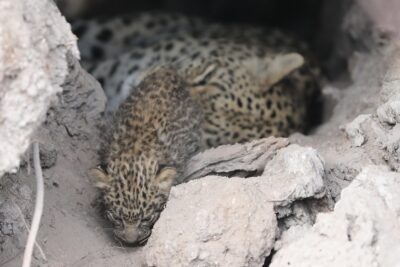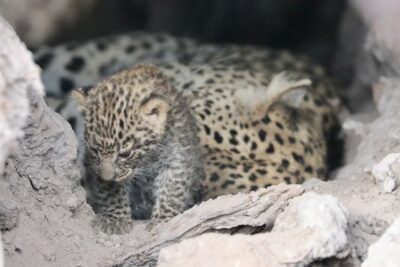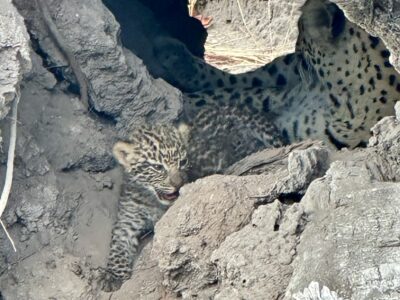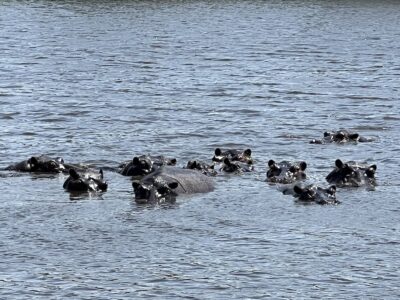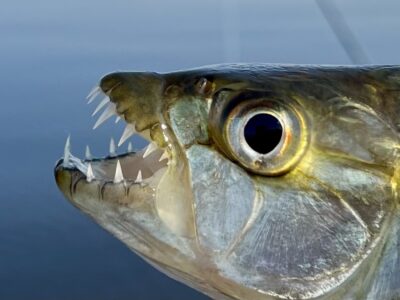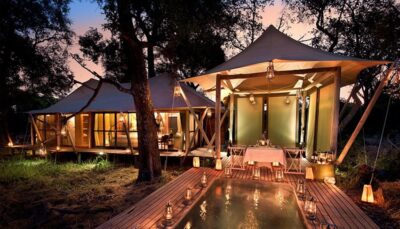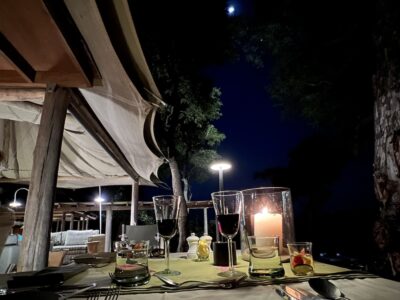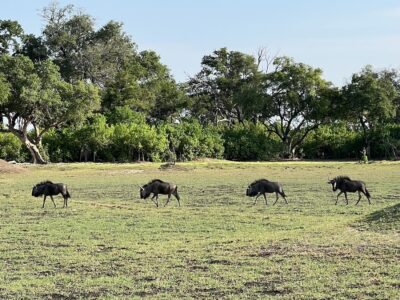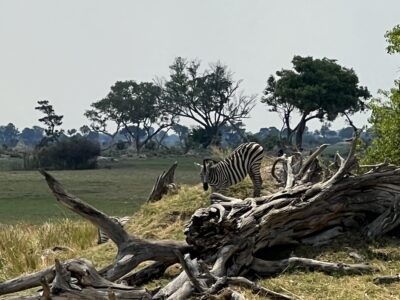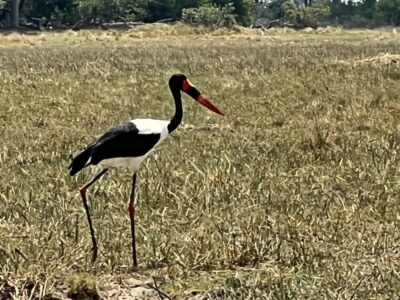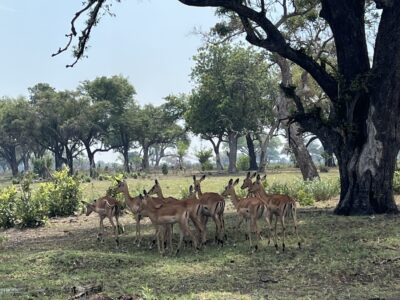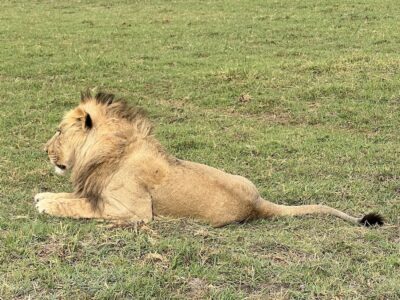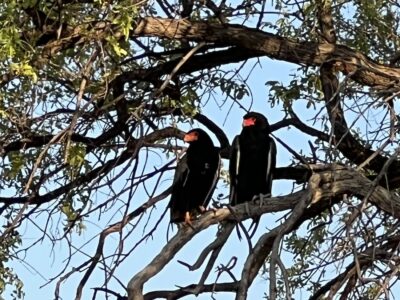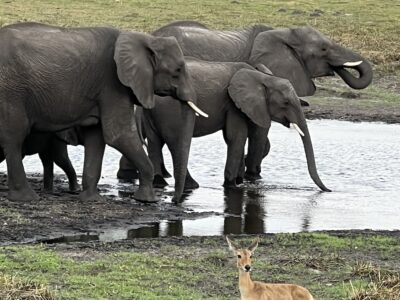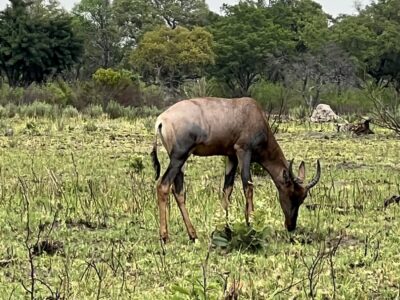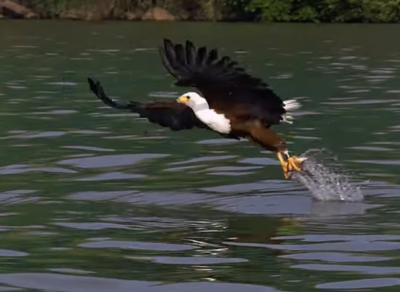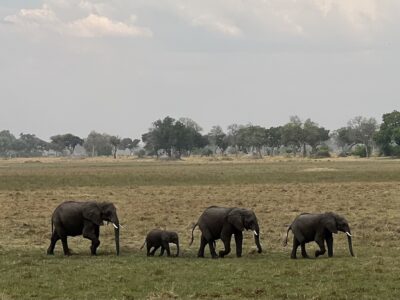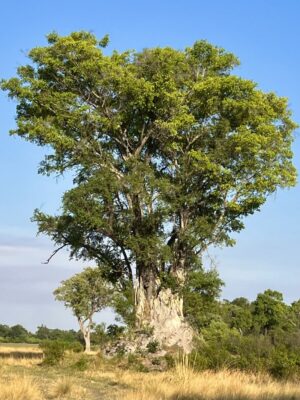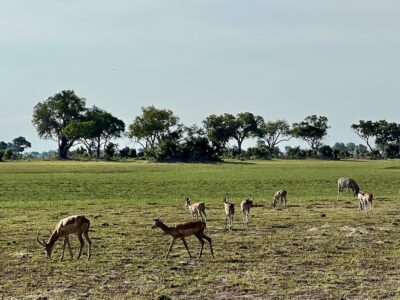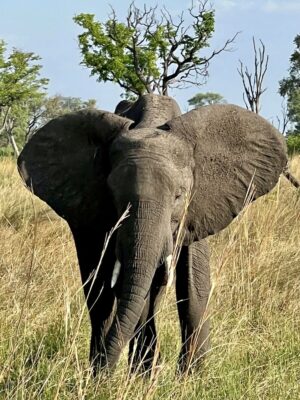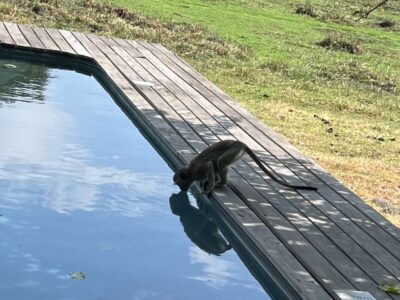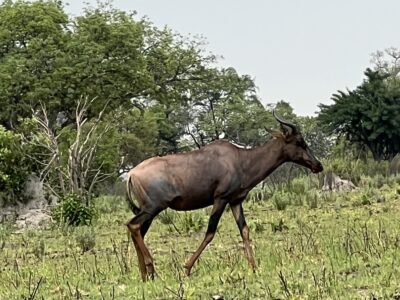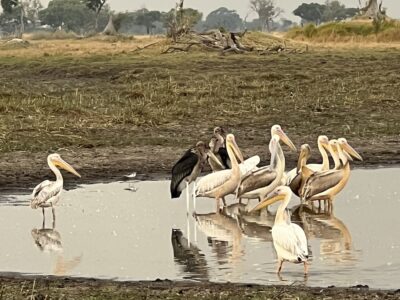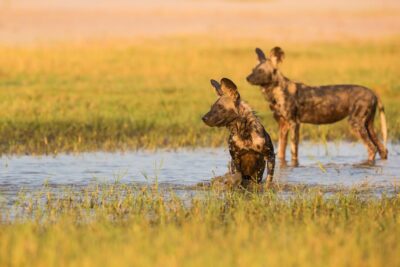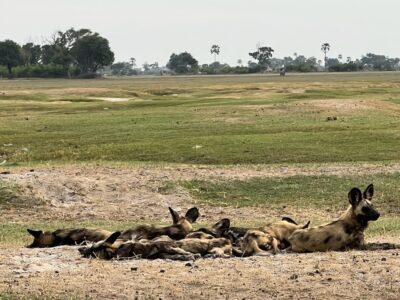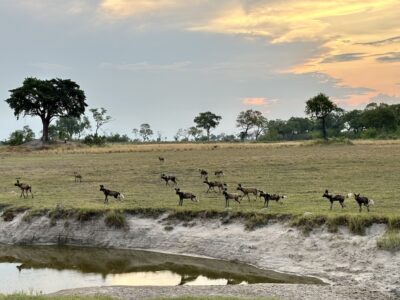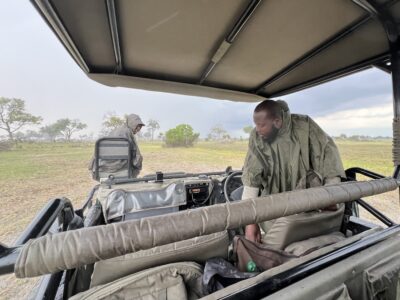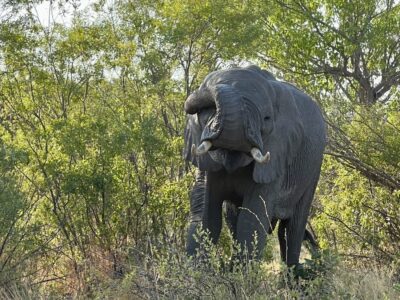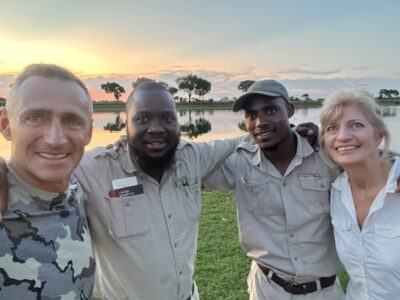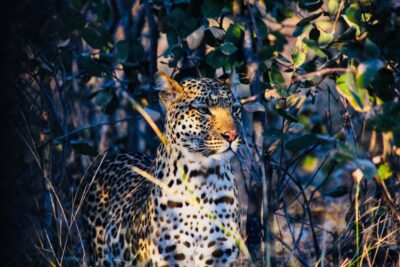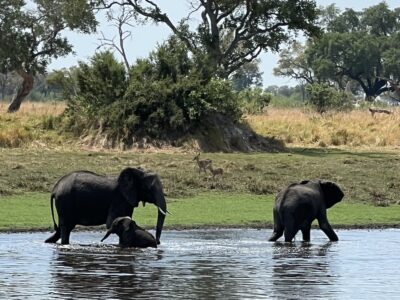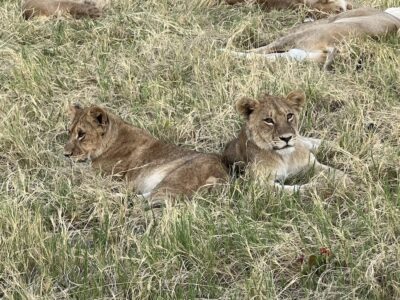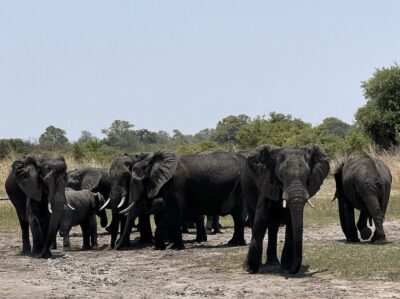In the Heart of Africa
With the wild animals in Nature’s Paradise, the Okavango Delta
I’m afraid I am going to disappoint all of you who are expecting to read a new catch report. This time it was something completely different – a safari to see the wild animals of the Okavango Delta. Some time ago I decided not to celebrate my milestone birthday with a big party but rather to escape to faraway Botswana and raise my glass to the wild animals there on the big day “X.”
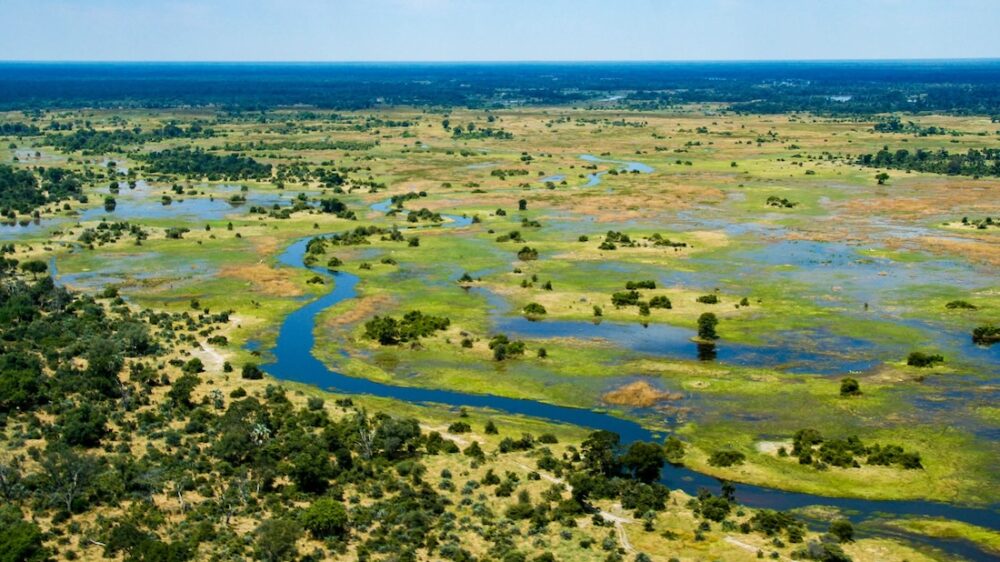
The journey began with a flight from Frankfurt to Johannesburg (South Africa) and from there straight on to Maun (Botswana). Maun is the gateway to the gigantic Okavango Delta nature reserve. Covering a huge surface area of 2,000,000 hectares, it is the largest landlocked delta in the world. From there we flew in a bush plane to our first Camp in Tuludi where we spent the next three days. Our guide “KK” was waiting to welcome us when we landed at the airstrip, the starting point of the safari. It took 45 minutes in a safari jeep to reach the camp and en route we saw our first antelopes and elephants (number 1 of the Big 5).
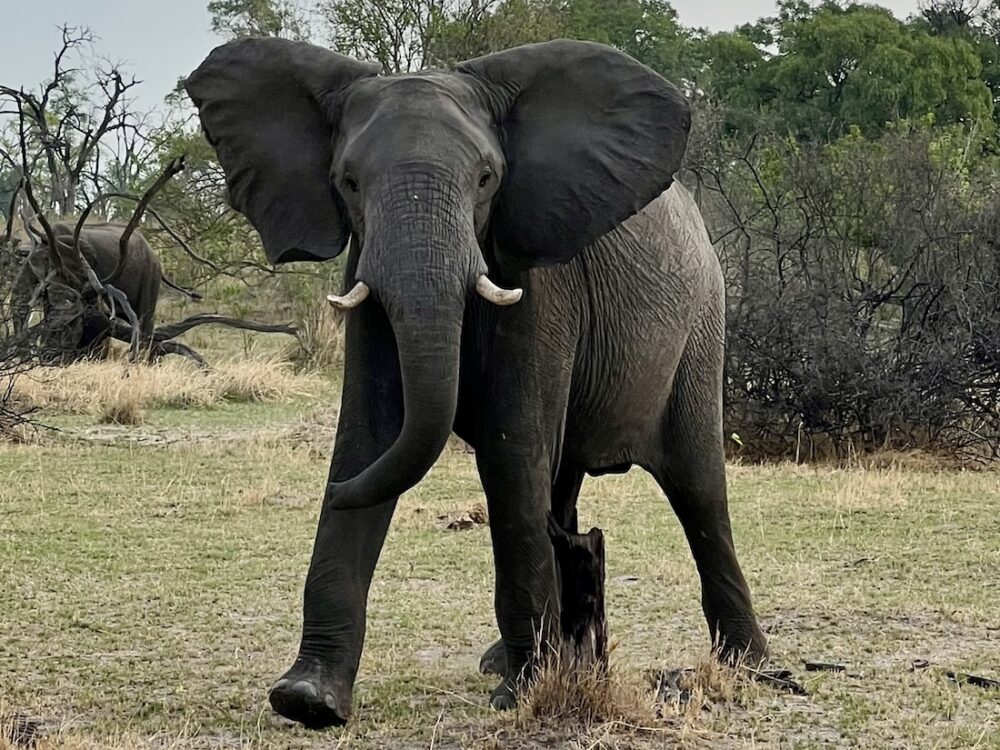
Tuludi is a small, very individual camp located in the Khwai Private Reserve which borders on the Moremi game reserve. The Khwai Private Reserve with its 200,000 hectares of pristine wilds is a safari fairytale: riparian zones stretch as far as the eye can see and a multitude of animal species enjoy their lives wandering along numerous water paths and lush green woodlands.

Accommodation in the camp is in luxurious tent chalets. The spacious rooms are a mixture of contemporary and traditional elements and exude airy lightness with interior and exterior bath facilities; additionally, every tent has its own veranda and a small private pool.

Straight after arriving at the camp, we set off on our first stalking trip at 4:30 p.m. We were very fortunate because “KK” led us to a female leopard with her two nine-month-old cubs (Number 2 of the Big 5). What a start! Along the way we saw numerous other animals including elephants and giraffes everywhere. Exhausted, we dropped into our beds that evening.
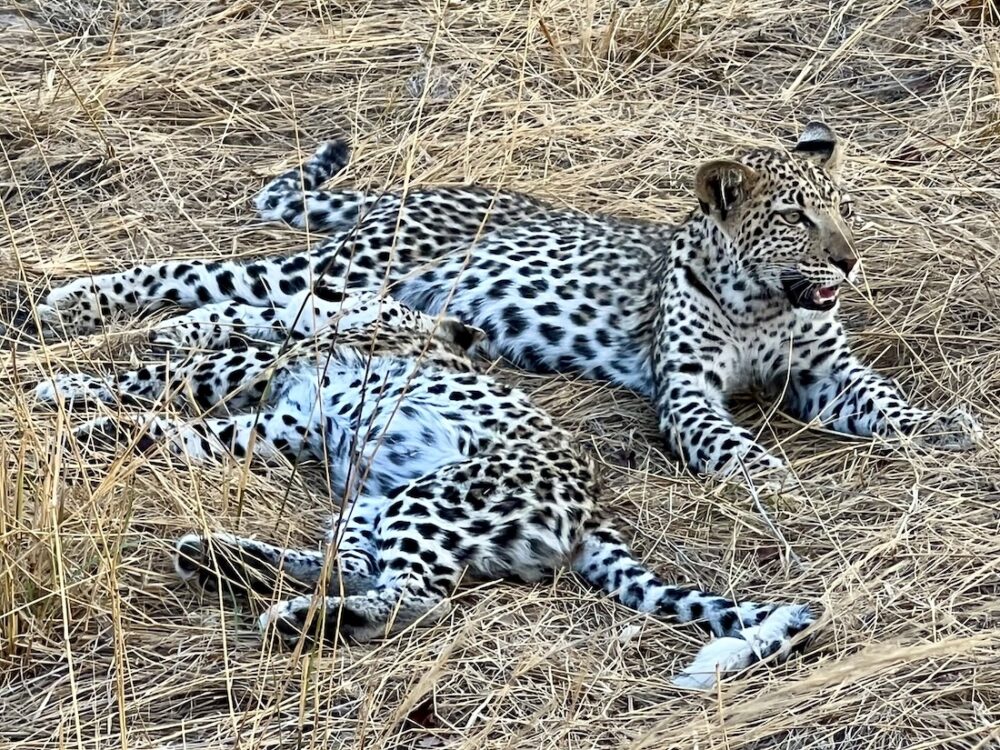
The next morning, “KK” woke us at 5 a.m. and after a light breakfast we set off at 6 a.m. for the morning excursion. Due to the high temperatures (up to 45° C in the daytime), the animals are most active in the delta in the early morning and late evening hours.
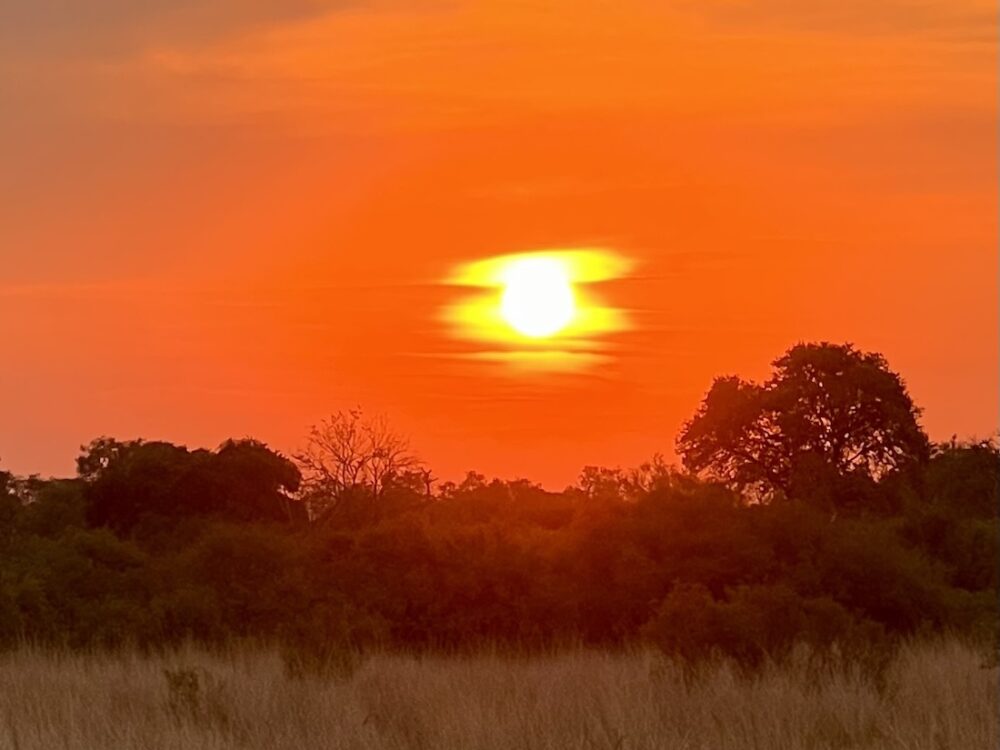
We set off in search of lions and “KK” naturally found them (Number 3 of the Big 5). This is far from easy since the reserve is so big and the lions’ hunting grounds so extensive. Apart from impalas, zebras, giraffes, hippopotami, warthogs etc. we came across a lioness and a little later her daughter with two roughly 8-month-old cubs relaxing in the shade of a tree and occasionally even cuddling each other.
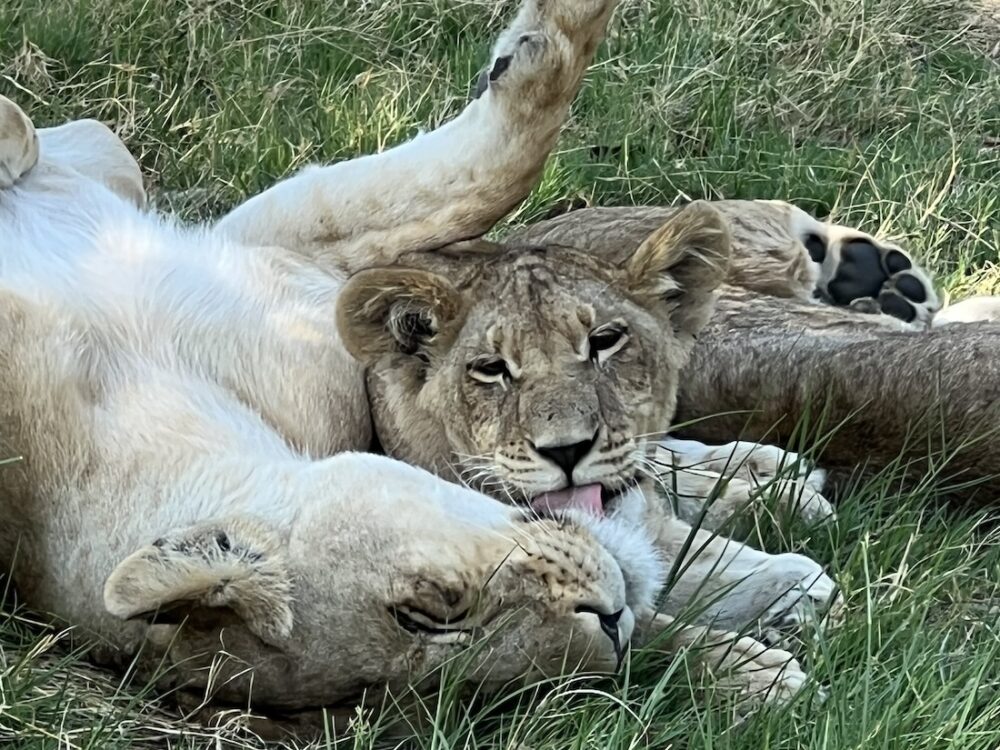
At around 11 a.m. we returned to the camp for lunch. Afterwards we had a nap and then took a break due to the high temperatures. At 4 p.m. we had a tea-time snack after which it was time to set off for the evening safari. We followed tracks across country, over the river, through the savannah and woodlands until returning in the dark at about 8 p.m.

The programme was repeated the following day: wake-up call at 5 a.m. and off stalking by 6.30 a.m. Luch break until 4 p.m. and then the evening outing. We had selected this day for African wild dogs. These animals are constantly on the move and you need a bit of luck to find them. We saw numerous antelope species and plenty of other animals – of course, “KK” found a few lions, elephants, giraffes, and buffalos (Number 4 of the Big Five). Unfortunately, there was no sign of the wild dogs. We were compensated by watching the birth of an impala (a small antelope species), an exceptional experience. Additionally, we witnessed lions communicating with one another over several miles. Two approximately 8-year-old lions were lying in the grass a mere 3 metres from our jeep when they replied to the calls and roars from a lioness miles away. The noise is deafening and pretty awesome.
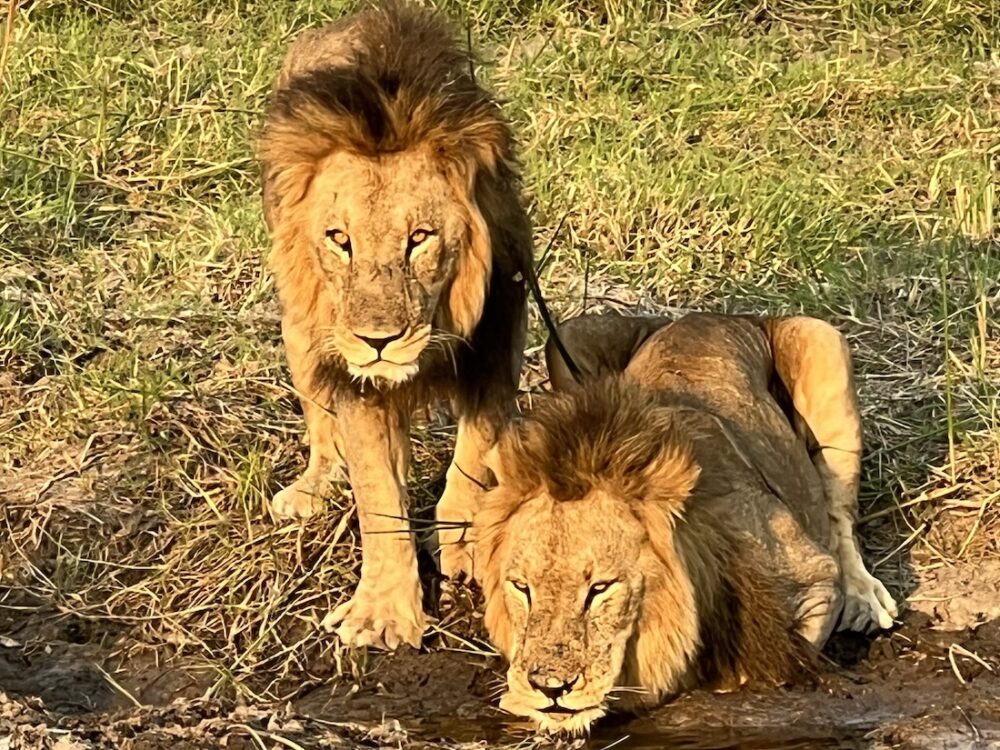
Back at the lodge that evening, we celebrated day “X“ over an excellent dinner and with birthday congratulations in the local language. What a great day it had been.
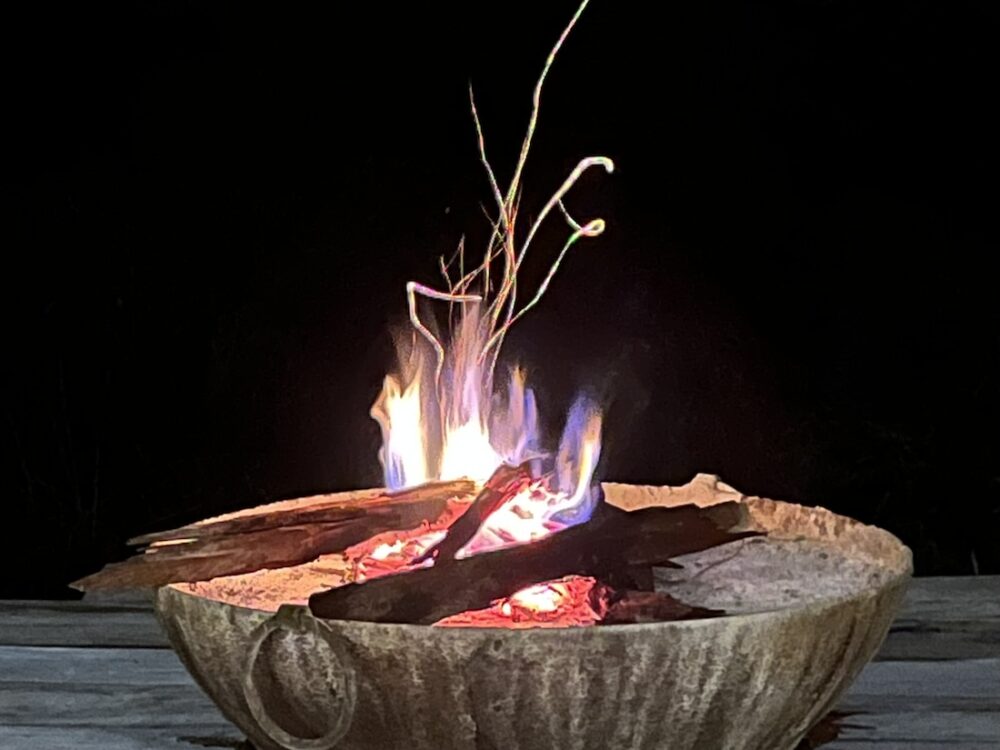
It is worth mentioning that you are not allowed to walk around the camp in the dark. A guide was always present to accompany us to and from the dining area to our tent. This is for safety reasons because the camp is not fenced in and wild animals are free to roam as they please. On that evening a huge bull elephant was blocking the path to our tent, munching the grass with relish. It was a hyena the night before.
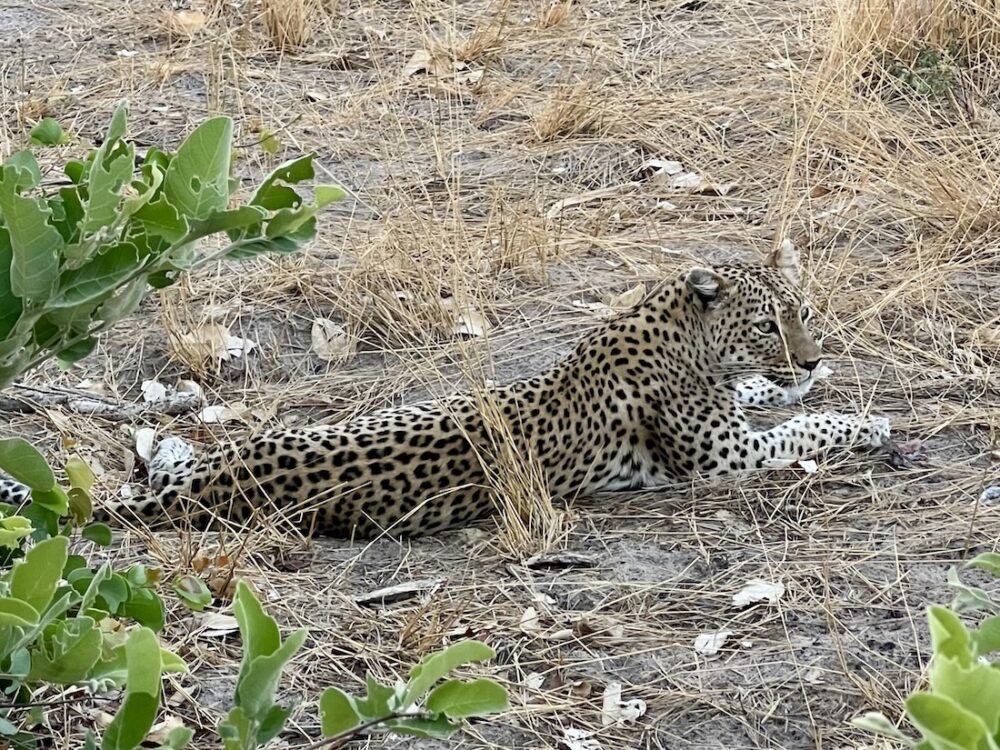
The next morning, we took the bush plane to the next lodge where we would be staying for 2 days. The Selinda Camp is a small but fine lodge on the banks of the Eastern Selinda Spillway – a waterway connecting the Okavango Delta with the swamps, rivers, and wetlands of the Linyanti and Kwando.

The elements of water, air, earth, and fire characterise the architecture of this camp which is also reflected in its impressive features. The camp offers a wonderful view of the surrounding swamps, waterways and the extensive grass savannah which is interrupted here and there with palm islands. Guests are accommodated in three spacious, very comfortable tents beneath a thatched roof and offers a large veranda and a private pool.
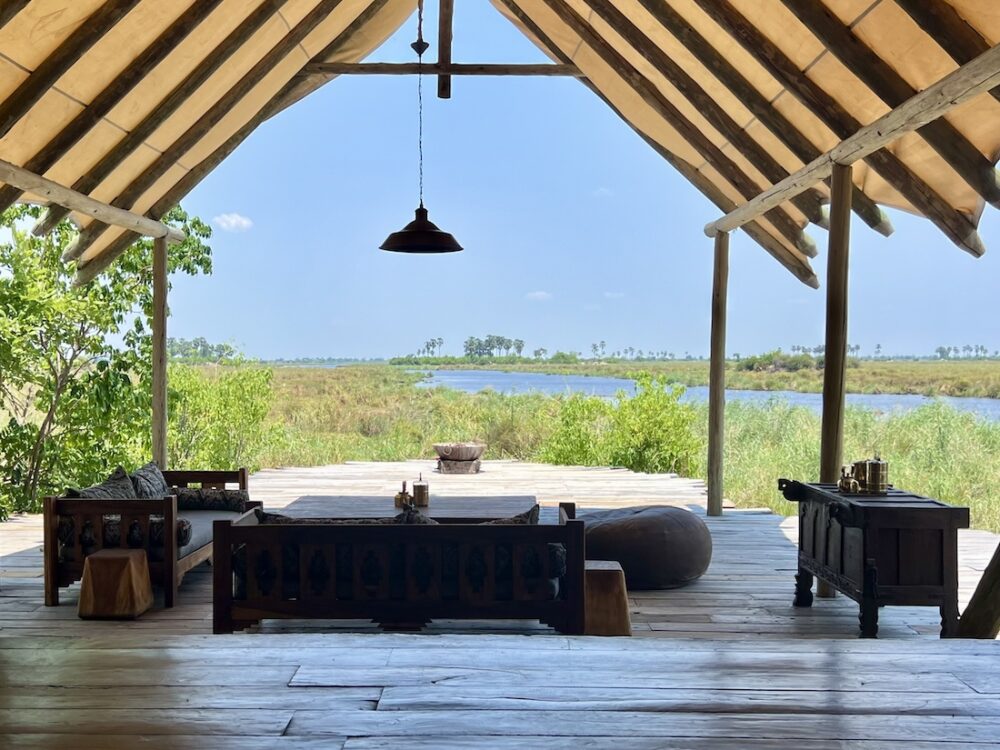
Activities in the Selinda Reserve include both daytime and nighttime stalking. You can usually see giraffes, baboons, black-backed jackals, elephants, wildebeest, cheetahs, leopards, crocodiles, lions, wild dogs, hippopotami, honey badgers, reedbucks, roan and sable antelopes and countless bird species.
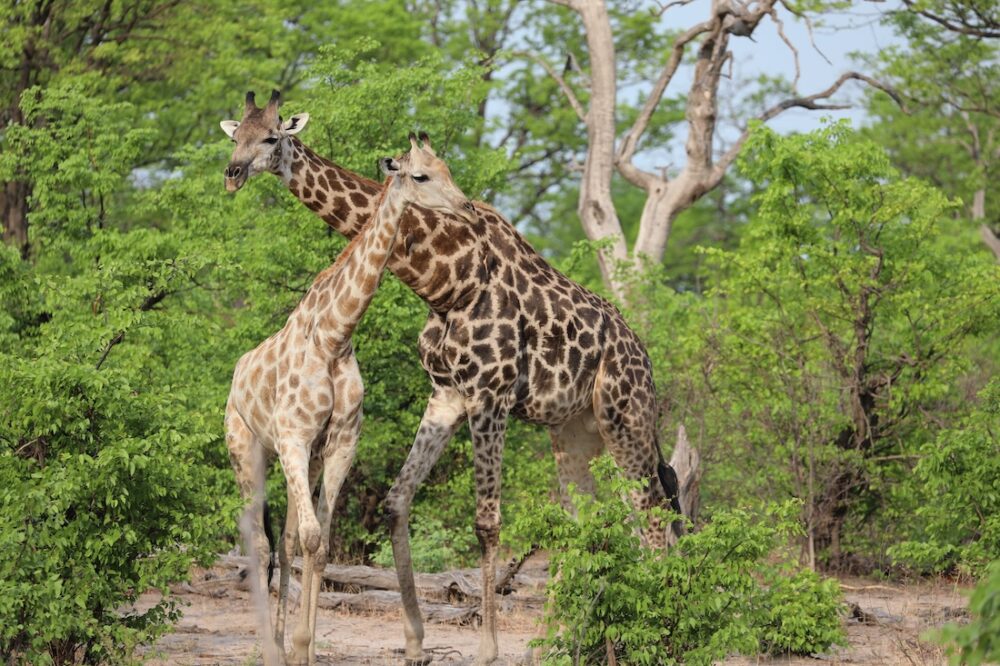
Our guide Forster has been employed there since 2008 and is well acquainted with the 30,000-hectare large area. On our first afternoon outing, we came across a pride of lions consisting of two mothers and five adolescent cubs. The countryside differs considerably from the previous camp. Even more bodies of water and somehow a different looking, gigantic area. Here again, there are only animals and no people apart from those in the camp.

The program in all the camps is basically the same – up at 5 a.m. and off on your trail adventure by 6 a.m. In the early hours of our first safari, we discovered a pack of ten wild dogs which had just started hunting. Wild dogs are very well-organized hunters and have a success rate of 90% which is extremely high in comparison with other predators. After a few minutes hunting they tracked down an impala and everything then moved very fast. The impala did not stand a chance. Not a pleasant sight but even so this is part of life in the wilds. Impalas are commonplace in the delta and are the staple diet of all the big cats. Wild dogs will also feed on buffalos, giraffes, and other antelope species. A hyena and jackal devoured what little was left of the impala after the wild dogs had finished feeding.
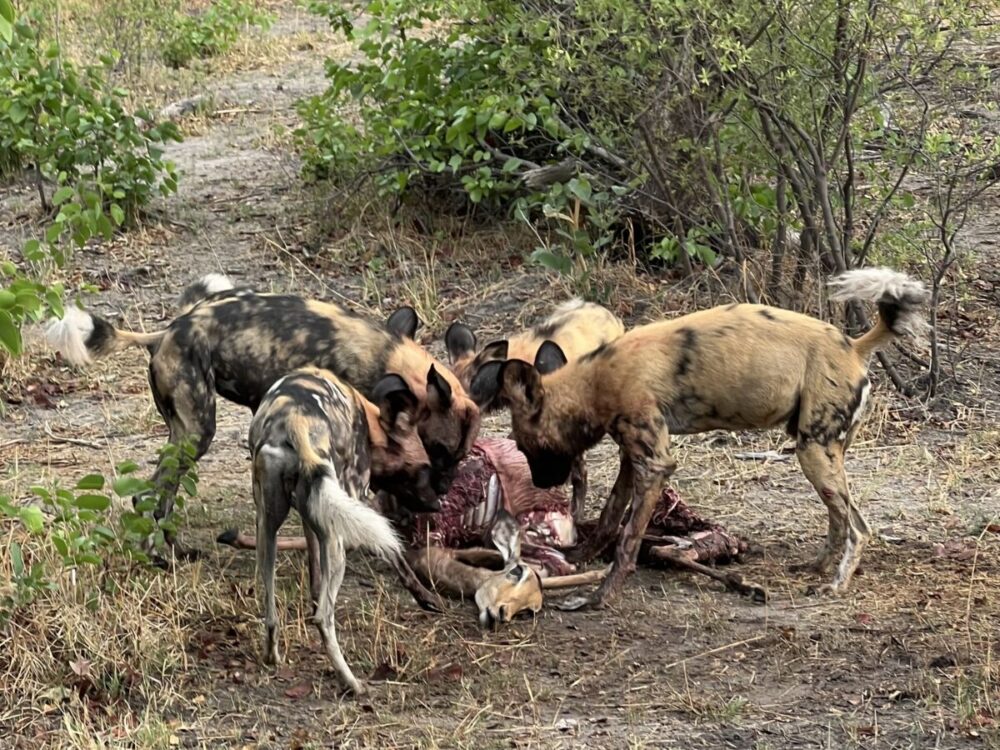
We were incredibly lucky on our evening excursion to see a female leopard with her four-week-old cubs – an experience it is hard to put into words. We enjoyed a firelight dinner accompanied by the sounds of nature.

The next morning, I had a chance to try for some tiger fish with my fly rod for an hour or so. I had four takes and was able to hook two small tiger fish amongst all the hippopotami. I would dearly have like to fish on for a couple of hours.
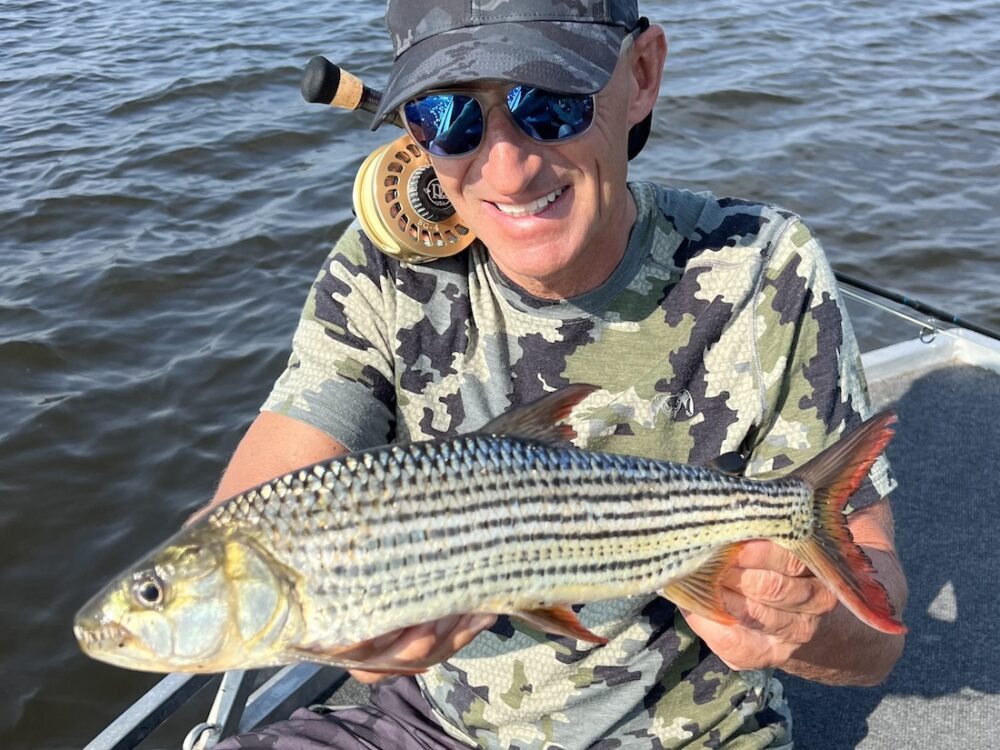
After breakfast it was time to catch the bush plane to our destination for the last two days – the “andBeyond Xaranna Camp.” On the trip to the camp, we discovered a fully grown leopard resting in the shade of a tree during the midday heat.

The andBeyond Xaranna Okavango Delta Camp enjoys luxurious solitude on its own island in the delta located within an exclusive wild animal sanctuary covering 272,000 hectares of pristine wilderness. The camp offers breath-taking views and just about the best the Okavango has to offer. Here again, only animals and no humans live outside the camp.
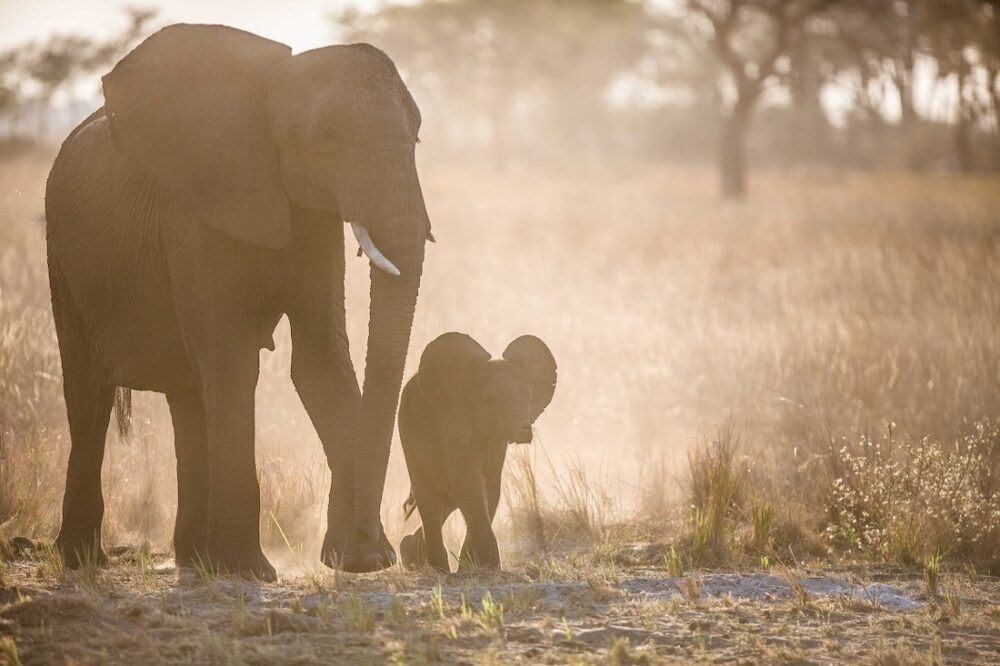
Accommodation consists of contemporary safari tents and a private pool. Elephants and monkeys just loved to approach the tents and drink from the pool. Twice a day, guests are taken on safari trips in special open vehicles. We frequently observed large herds of wild buffalo.
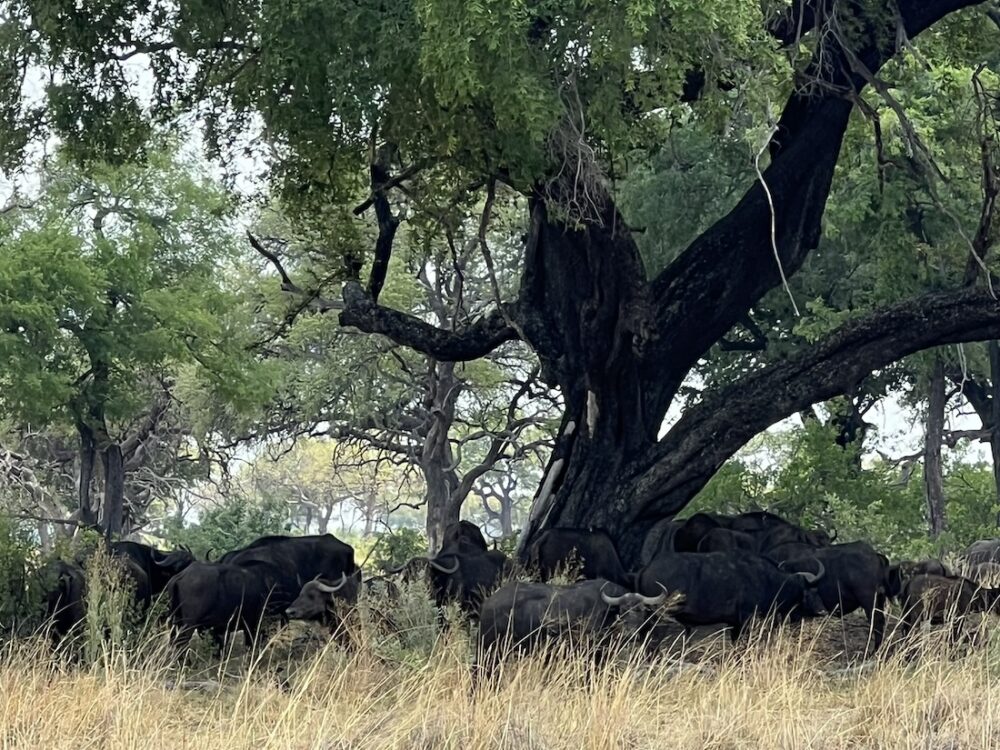
The programme is similar but this time we had two guides (our driver Thuso and our scout called Paul). The countryside is completely different from the two previous camps. This time we travelled through extensive plains with countless herds of animals. It was also where we were to see the largest buffalo herd during our safari week.
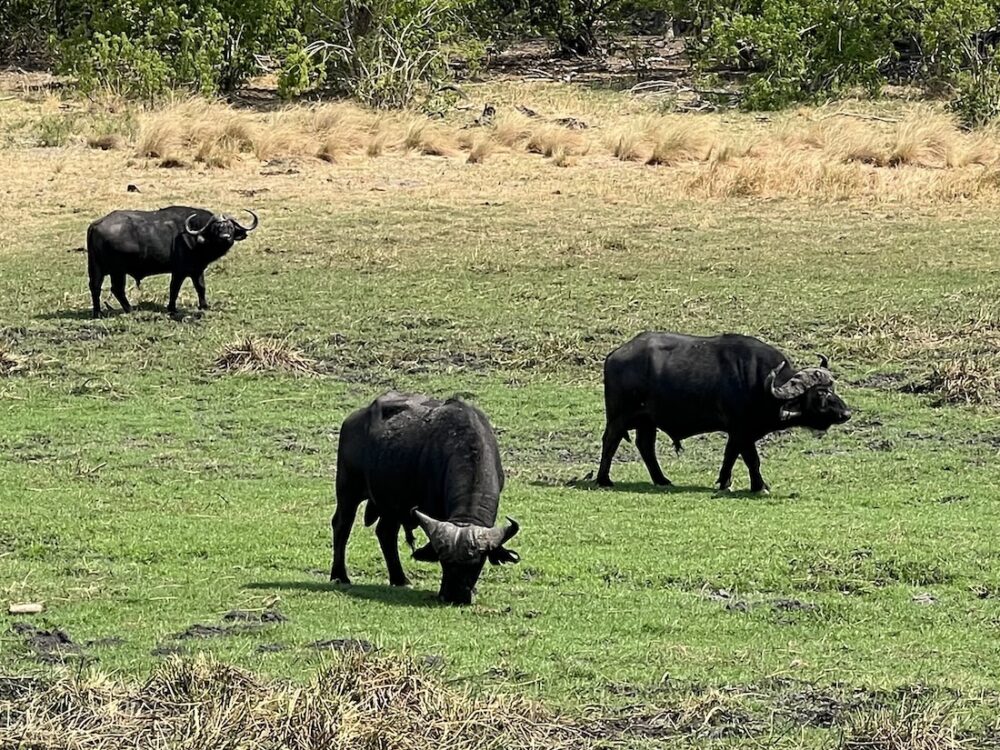
After an hour we came across two lions chilling in the heat. Later we were fortunate to observe a pack of some 20 wild dogs. Shortly before darkness, the hunt was on and we followed the pack at full speed in our jeep over hedge and ditch. This cannot be recommended to anyone with back problems – but what a fascinating spectacle. Yet again, the wild dogs wasted no time in catching their prey which did not stand a chance.
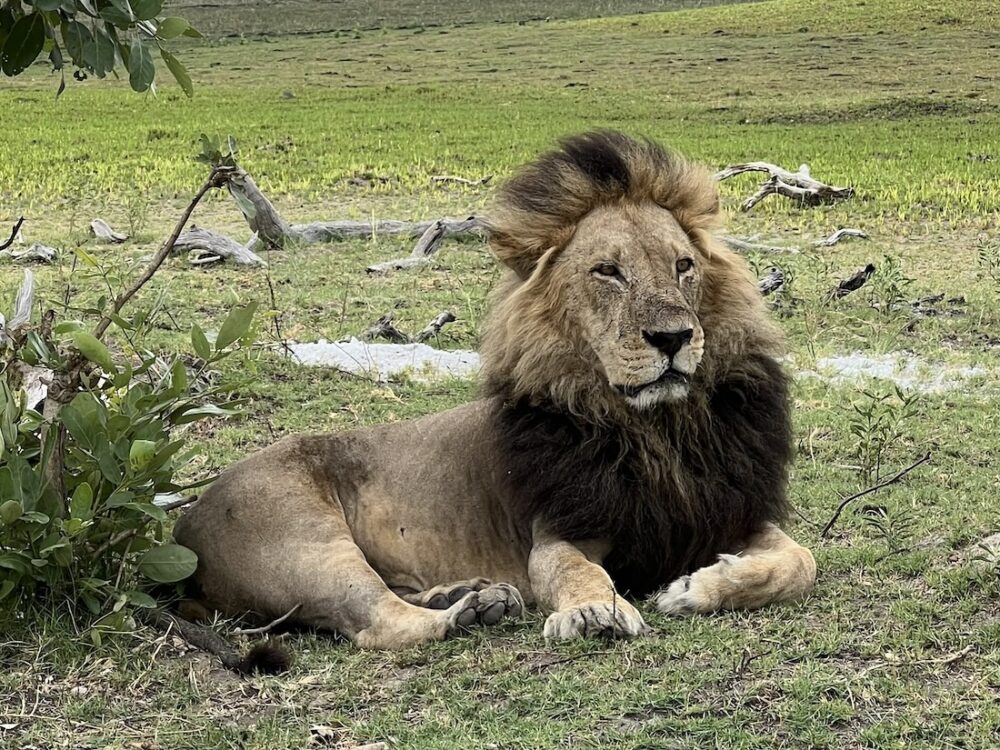
On our last day – in addition to the wide range of wild animals both in the water and on land – we saw another leopard and several lions. Even an early morning shower did not deter us. We put on our waterproofs with hoods and carried on.
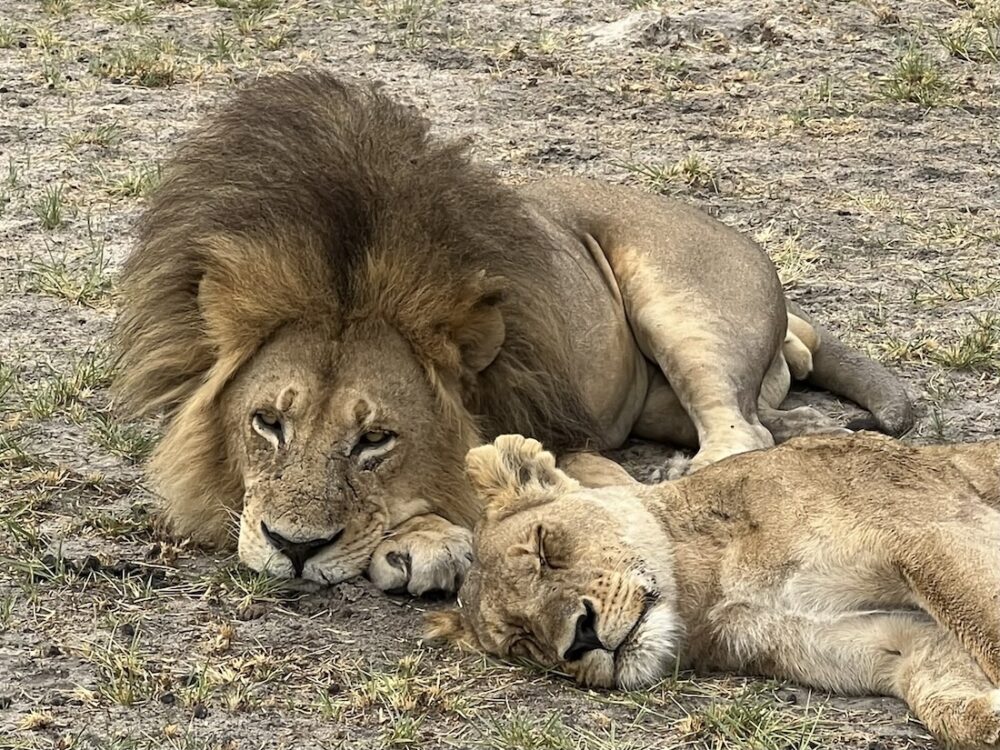
It took a while to digest the many experiences and impressions. We watched nature and the wilds in their purest form, so many kinds of countryside with gigantic termite hills, watched magnificent sunsets with no noise except for the sounds of nature.
Our visit to the wild Okavango Delta is hard to describe in words – simply an adventure one can recommend to all animal and nature lovers.
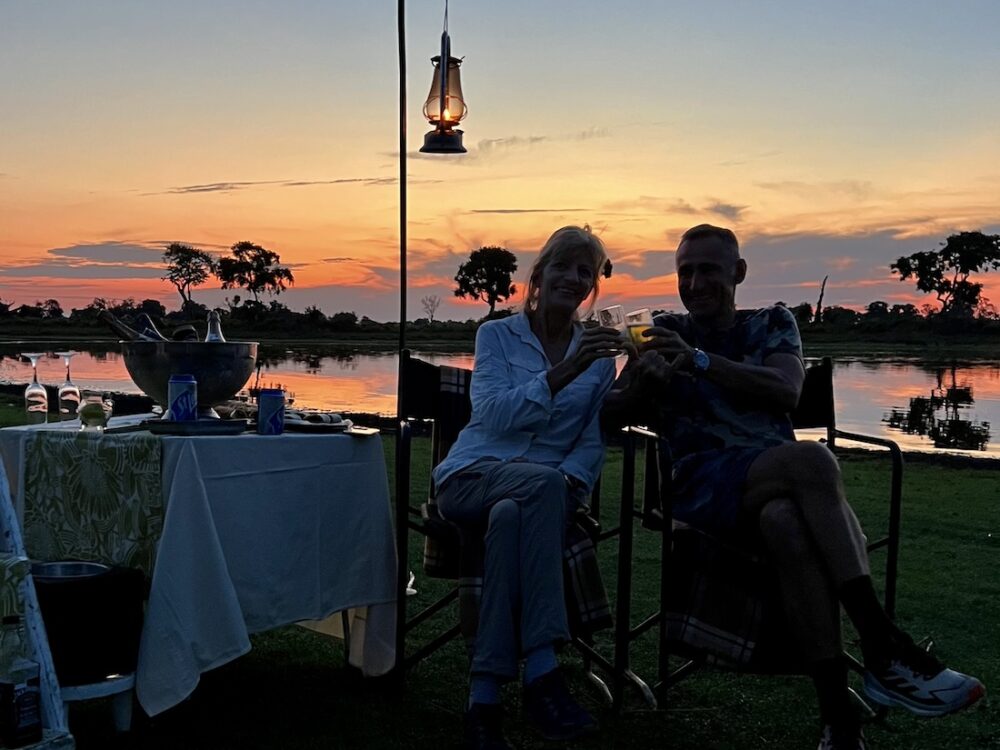
Many thanks to our travel agents “DSI Reisen“ https://www.dsi-reisen.de/, who organized everything perfectly – a safari we are never likely to forget.
Tight lines
Stephan and Martina Kreupl, November 2023
